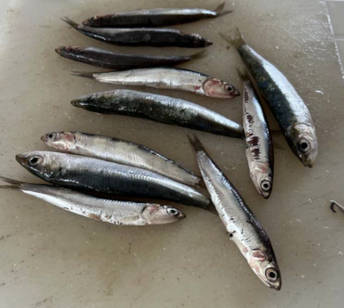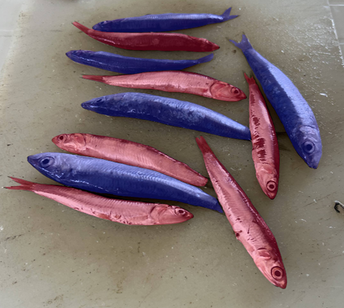THE CLIENT
The client is an Italian fishing consortium that conducts selective fishing in the open sea, paying careful attention to water quality and fish selection to ensure their wholesomeness and authenticity, while also paying attention to environmental sustainability and the precious balance of the marine ecosystem.
NEEDS
The request was to create an automatic recognition system for Mediterranean fish species, and more specifically, to be able to distinguish between ‘blue fish’, anchovies, and sardines based on images of the catch taken by special cameras.
THE PROJECT
The system was built using ADR-Flow, our supervised machine learning support system, which demonstrated its flexibility and adaptability to a wide range of situations.
As always, ADR-Flow consists of two modules: the edge module and the cloud module.
Without a clear objective in this case, but simply the idea of understanding what was possible, we imagined the edge module as a mobile station organized so that the fish could be arranged on a flat surface for photography or even flow along a conveyor belt, so that:
- the control station could manage interaction with the operator through a graphical and sound user interface that also handles sending photos and metadata to the remote server (cloud module).
- the only “smart” camera, which is a real calculator (a Raspberry in this case too) with powerful built-in functions, could perform fish recognition in real time, coloring the fish according to their species.
The cloud module, on the other hand, is made up of a completely standard virtual machine that has the task of:
- receive, record and analyze images
- allow specialized technicians to search the images, view them and manually classify them, that is, for each fish present in the image, whether it is an anchovy or a sardine, in order to use them for training and continuous verification of the performance of neural networks
- support data scientists in training neural networks
- provide the system manager with a dashboard to monitor the system through simple graphs.
Once trained, the neural network is sent to the camera to perform real-time recognition.
The fundamental difference between this case and the others, relating to defect recognition, is that different neural network models specialized for this type of recognition were used, and for the same reason, the manual classification of the images was performed using visual prompting systems.

Freshly caught anchovies and sardines

Anchovies and sardines recognized
RESULTS
The results of the experiment are excellent and meet the client’s needs. The system successfully distinguishes between anchovies and sardines and may allow, in the future, the automation of the fish selection process.

